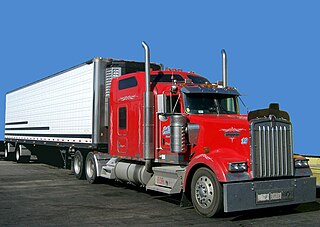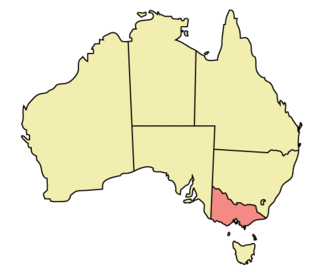Related Research Articles

The Singapore Area Licensing Scheme (ALS), was a road pricing scheme introduced from 1975 to 1998 that charged drivers who were entering downtown Singapore, and thereby aimed to manage traffic demand. This was the first urban traffic congestion pricing scheme to be successfully implemented in the world. This scheme affected all roads entering a 6-square-kilometre area in the Central Business District (CBD) called the "Restricted Zone" (RZ), later increased to 7.25 square kilometres to include areas that later became commercial in nature. The scheme was later replaced in 1998 by the Electronic Road Pricing.

Electronic toll collection (ETC) is a wireless system to automatically collect the usage fee or toll charged to vehicles using toll roads, HOV lanes, toll bridges, and toll tunnels. It is a faster alternative which is replacing toll booths, where vehicles must stop and the driver manually pays the toll with cash or a card. In most systems, vehicles using the system are equipped with an automated radio transponder device. When the vehicle passes a roadside toll reader device, a radio signal from the reader triggers the transponder, which transmits back an identifying number which registers the vehicle's use of the road, and an electronic payment system charges the user the toll.

In the United Kingdom, the term Compulsory Basic Training is a preliminary vehicular training course which must be completed by people wishing to ride a motorcycle or moped unaccompanied on the road, and remains valid for 2 years upon completion. It was introduced in Great Britain on 1 December 1990 as a means of reducing accidents on the road caused by inexperienced drivers by reviewing aspects of riding both on and off the road with a qualified motorcycle instructor registered with an Approved Training Body (ATB). If a full car licence was obtained before 1 February 2001 it is not necessary to complete a CBT course to ride a moped.

A commercial driver's license (CDL) is a driver's license required in the United States to operate large and heavy vehicles or a vehicle of any size that transports hazardous materials or more than 15 passengers.

The Ministry of Transportation (MTO) is the provincial ministry of the Government of Ontario that is responsible for transport infrastructure and related law in Ontario, Canada. The ministry traces its roots back over a century to the 1890s, when the province began training Provincial Road Building Instructors. In 1916, the Department of Public Highways of Ontario (DPHO) was formed and tasked with establishing a network of provincial highways. The first was designated in 1918, and by the summer of 1925, sixteen highways were numbered. In the mid-1920s, a new Department of Northern Development (DND) was created to manage infrastructure improvements in northern Ontario; it merged with the Department of Highways of Ontario (DHO) on April 1, 1937. In 1971, the Department of Highways took on responsibility for Communications and in 1972 was reorganized as the Ministry of Transportation and Communications (MTC), which then became the Ministry of Transportation in 1987.
Te Manatū WakaMinistry of Transport is the public service department of New Zealand charged with advising the New Zealand Government on transport policy. The Ministry works closely with other government transport partners, including the New Zealand Transport Agency (NZTA) to advance their strategic objectives.

A daytime running lamp is an automotive lighting and bicycle lighting device on the front of a roadgoing motor vehicle or bicycle, automatically switched on when the vehicle's handbrake has been pulled down, when the vehicle is in gear, or when the engine is started, emitting white, yellow, or amber light. Their intended use is not to help the driver see the road or their surroundings, but to help other road users identify an active vehicle.

Vehicle and Operator Services Agency (VOSA) was an executive agency granted trading fund status in the United Kingdom sponsored by the Department for Transport of the United Kingdom Government.

Driver's education, driver education, driving education, driver's training, driver's ed, driving tuition or driving lessons is a formal class or program that prepares a new driver to obtain a learner's permit or driver's license. The formal class program may also prepare existing license holders for an overseas license conversion or medical assessment driving test or refresher course. It may take place in a classroom, in a vehicle, online, or a combination of the above. Topics of instruction include traffic code or laws and vehicle operation. Typically, instruction will warn of dangerous conditions in driving such as road conditions, driver impairments, and hazardous weather. Instructional videos may also be shown, demonstrating proper driving strategies and the consequences for not observing the rules.

The Land Transportation Franchising and Regulatory Board is an agency of the Republic of the Philippines under the Department of Transportation (DOTr). The LTFRB was established on June 19, 1987, during the former president Corazon Aquino’s administration.

The Regional Transport Office or District Transport Office or Regional Transport Authority (RTO/DTO/RTA) is an office administered by the State Governments constituted under Section 213 (1) of the Motor Vehicles Act, 1988 of India and is responsible for implementing the various provisions of this Act. It operates under the Transport Department of the State Government. It is responsible for maintaining a database of drivers and a database of vehicles for various states of India.

The Norwegian Public Roads Administration is a Norwegian government agency responsible for national and county public roads in Norway. This includes planning, construction and operation of the national and county road networks, driver training and licensing, vehicle inspection, and subsidies to car ferries.
The Salter Report was named after Arthur Salter, who chaired an influential conference of road and rail experts in 1932 which reported in 1933. The report directed British government policy for transport funding for decades to follow.

The Accident Towing Services Act 2007 is a law enacted by the Parliament of the State of Victoria, Australia. The act is the prime statute regulating the vehicle towing industry which provides towing and recovery services for light and heavy road vehicles across Victoria. It is predominately founded on safety and consumer protection sentiments. The act continued economic controls over the industry and contains occupational regulation characteristics. The style of the underlying regulatory scheme varies in parts and represents a blend which is prescriptive in some parts and performance and process-based in others.

Roads and Maritime Services was an agency of the New South Wales Government responsible for building and maintaining road infrastructure and managing the day-to-day compliance and safety for roads and waterways.

People who are driving as part of their work duties are an important road user category. First, workers themselves are at risk of road traffic injury. Contributing factors include fatigue and long work hours, delivery pressures, distractions from mobile phones and other devices, lack of training to operate the assigned vehicle, vehicle defects, use of prescription and non-prescription medications, medical conditions, and poor journey planning. Death, disability, or injury of a family wage earner due to road traffic injury, in addition to causing emotional pain and suffering, creates economic hardship for the injured worker and family members that may persist well beyond the event itself.

A driver's license, driving licence, or driving permit is a legal authorization, or the official document confirming such an authorization, for a specific individual to operate one or more types of motorized vehicles—such as motorcycles, cars, trucks, or buses—on a public road. Such licenses are often plastic and the size of a credit card.

The Driver and Vehicle Standards Agency (DVSA) is an executive agency of the UK Department for Transport (DfT).

The Motor Vehicles Act is an Act of the Parliament of India which regulates all aspects of road transport vehicles. The Act provides in detail the legislative provisions regarding licensing of drivers/conductors, registration of motor vehicles, control of motor vehicles through permits, special provisions relating to state transport undertakings, traffic regulation, insurance, liability, offences and penalties, etc. For exercising the legislative provisions of the Act, the Government of India made the Central Motor Vehicles Rules 1989.
As a part of student transport, buses play a key role in transporting students to and from school, coinciding with their high seating capacity and a higher degree of safety compared to other modes of transportation. The usage of buses in student transport varies worldwide, ranging from the usage of public transportation by students, transit buses set aside to transport students, or purpose-built school buses owned and operated by school systems.
References
- ↑ Editor, Chief (24 October 2018). "Zambia : RATSA names new sites for speed camera enforcement" . Retrieved 31 March 2019.
{{cite web}}:|last=has generic name (help) - ↑ Editor, Chief (31 December 2018). "Zambia : Road Transport and Safety Agency gives 14 days grace period for licences" . Retrieved 31 March 2019.
{{cite web}}:|last=has generic name (help) - ↑ admin (20 August 2018). "RATSA Boss Says Zambians Must Pay The K13. 5 Million For Using Their Vehicles Abnormally" . Retrieved 31 March 2019.
- ↑ "Road traffic safety", Wikipedia, 2021-04-05, retrieved 2021-05-24
- ↑ "Road Safety : Basic Facts" (PDF). World Health Organization: 1. November 2017.
- ↑ "About RTSA – Road Transport and Safety Agency" . Retrieved 2020-05-28.